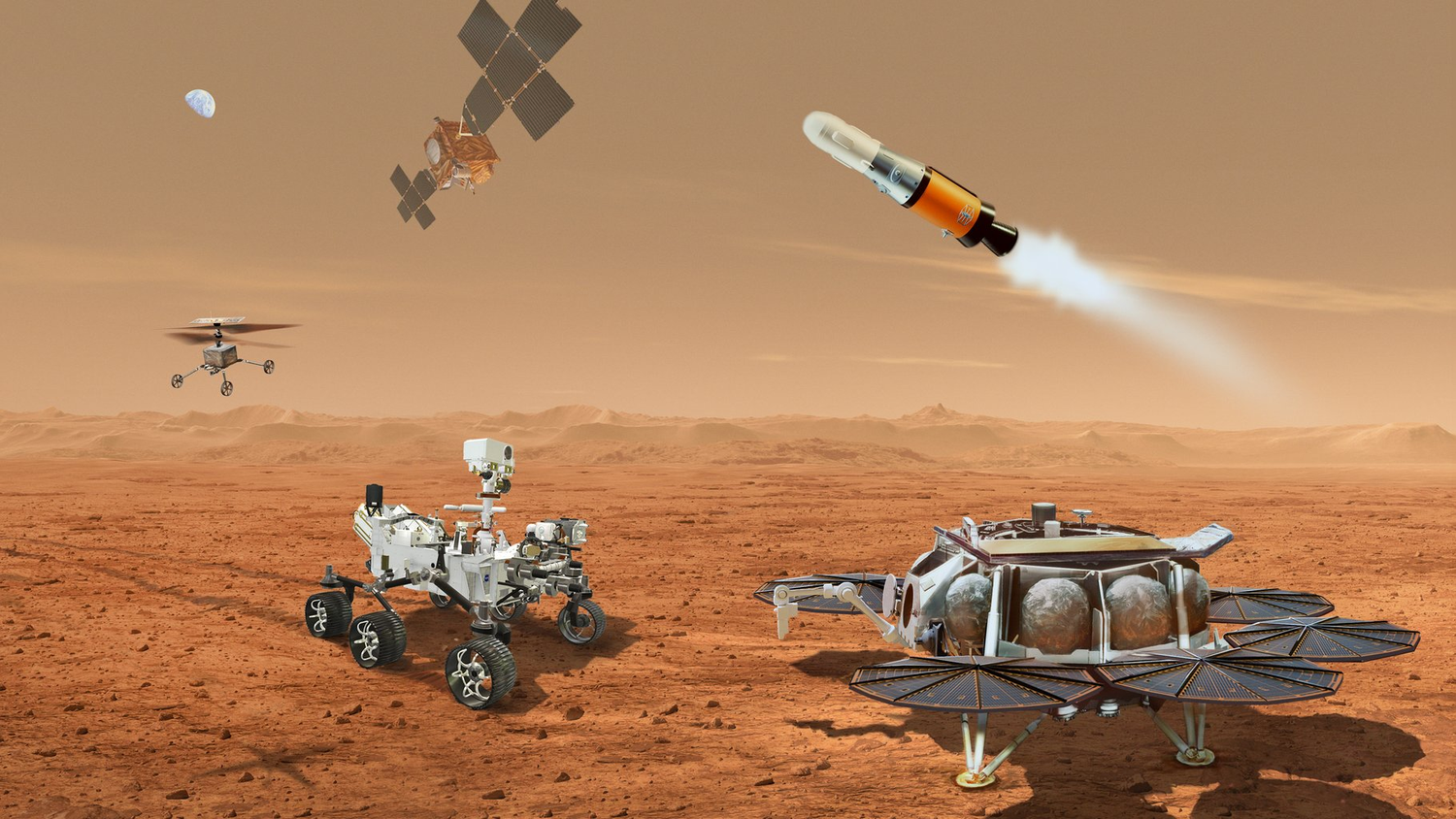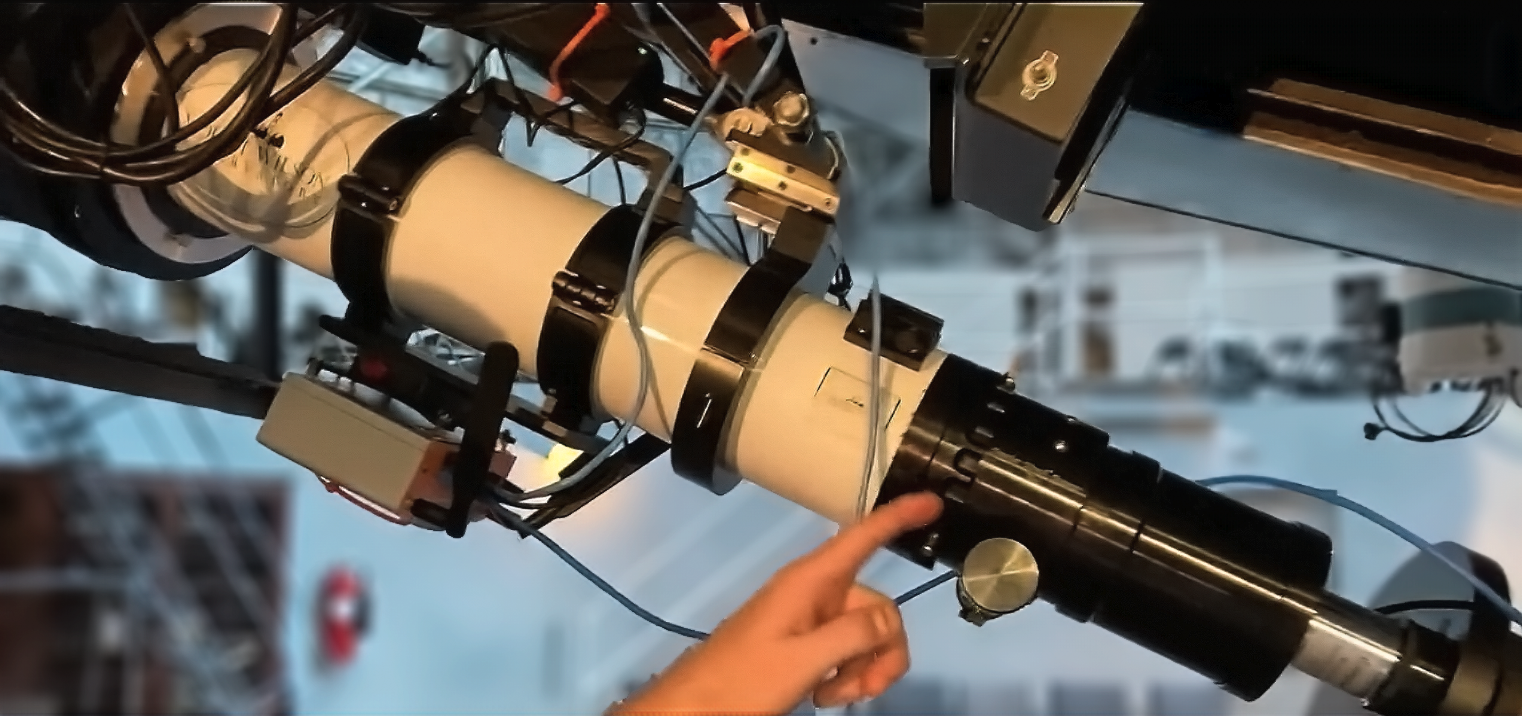
Dr. Daniel (Doc) Barth conducts the 94th How Do You KNOW? program today, June 3rd at 4:00 p.m. Central with the topic of the problems of the Mars Sample Return with costs soaring in the billions and delays that are unacceptable. Should NASA cancel the project that has so far been successful, or should we move forward despite the costs?
Since 1972, no human explorer has gone beyond low Earth orbit. While it took just seven years from the first manned lunar landing to placing a large craft on the Martian surface, the intervening fifty years have seen no manned missions beyond Earth orbit.
With manned Martian landings continuously "thirty years away," a robotic sample return mission seemed the answer.
Questions about the possibility of life on Mars have not gone away since the Viking lander missions from the mid-1970s. The Labeled Release experiments designed by Gilbert Levin and Patricia Straat discovered evidence for microbial life on Mars in 1976—results subsequently dismissed by NASA.
In the News:
-
Ready for Satellite Mobile Phone Service?
- FCC has unanimously approved a regulatory framework for what is referred to as supplemental phone coverage from space.
- The new framework will allow satellites to use radio signals from existing earthbound carriers to keep clients connected when out of conventional cell coverage range
- Companies like Lynk Global, AST SpaceMobile, and the Starlink service from Space X are already working on plans and tech
-
Does Dark Matter affect Milky Way Spirals?
- The Vera C. Rubin Observatory in Chile is planning to study streams of stars stripped from orbiting dwarf galaxies to try to detect the effects of Dark Matter.
- Dark Matter (if it exists) is predicted to stretch and modify the shapes of these streams of gas and stars. The observatory notes that these structures will help constrain the type of particle that makes up Dark Matter.
-
FCC will require Reentry Licences for spacecraft
- Any space vehicle that may reenter Earth’s atmosphere will now require a reentry licence before launch. The move is meant to protect people and property on the ground and force launch companies to plan for reentry.
-
Boeing Makes New Space Suit
- Called the Boeing Blue space suit, these duds developed for the Boeing Starliner will weigh just 20 lbs (9 kg) each with all of their accessories aboard. Compared to older suits from Apollo to the Space Shuttle which weighed over 180 lbs each, these are far lighter and more comfortable.

No word on whether Boeing engineers drew inspiration from the 1950 George Pal film Destination Moon, but we think the new design is pretty awesome!

Look for the newest knockoffs of this stunning design in stores near you soon!
Problems Bringing Martian Samples Home
I: Manned Exploration has been Abandoned
- Since 1972, no human explorer has gone beyond low Earth orbit. And while it took just 7 years from the first manned lunar landing to placing a large craft on the Martian surface, the intervening 50 years have seen no manned missions beyond Earth orbit.
- With manned martian landings continuously ‘thirty years away’, a robotic sample return mission seemed the answer.
- Questions about the possibility of Life on Mars have not gone away since the Viking lander missions from the mid-1970’s. The Labeled Release experiments designed by Gilbert Levin and Patricia Straat discovered evidence for microbial life on Mars in 1976 – results subsequently dismissed by NASA.
II: The Objections to the LR data
- The other experiments on Viking could not confirm the results
- The LR experiment was found to be at least 10,000x more sensitive than the other Viking experiments at detecting microbial activity in soil
- Mars has no water
- Subsequent work has shown that Mars has both subsurface ice and subsurface water in large quantities. Liquid water also occassionally flows in seasonal gullies on south facing slopes
- Martian soil is contaminated with perchlorates
- Perchlorates (in lower levels) are eliminated by microbes in the soil in arid regions
III: Solving Controversy with Data
- The history of controversy over life on Mars has been long and complex, with proponents (and opponents) for every viewpoint
- Scientific controversy has never been solved by argument, only by the discovery of definative data from a conclusive experiment – but our data is on Mars.
- There are two alternatives:
- Send people to Mars to do science on site
- Collect and return samples from Mars to study on Earth
IV: The Sample Collection Mission
- The Perseverance Rover is the sample collection part of the mission. The rover can collect up to 43 samples, including 5 witness tubes.
- Sample tubes are for materials the rover collects. Sample tubes are empty and are later tested for contaminants
- Collected tubes are stored on board the rover until the team decides where to leave them for later collection
- Once the samples are collected, the team will deposit them at a collection point or sample cache depot
- A later mission – originally planned for 2027 – will fly to Mars, collect the samples, and return them to Earth
V: Returning Samples “Too Expensive”
- “The bottom line is that $11 billion is too expensive and not returning samples until 2040 is unacceptably too long.” ‑‑NASA Administrator Bill Nelson
- Worries at NASA about ‘cannibalizing other programs’ to pay for MSR
- The MSR pricetag of $11 billion is an ‘upper end estimate’ calculated by an Independent Review Board. NASA’s original budget estimate: $2.5 – 3 billion.
- This budget decision NOT to support the Mars Sample Return (MSR) project has resulted in much of the MSR workforce being laid off
- A headline in a Chinese newspaper said: “China’s Mars sample return mission is progressing smoothly while NASA struggles behind schedule”
- NASA is spending more than $100 billion on the Artemis Moon program
- Estimates for a manned landing on Mars are estimated to cost more than 50x the $11 billion budgeted for the sample return mission
VI: Why MSR is Critical for a Manned Landing
- MSR has many technical achievements which are precursors to a manned mission to Mars
- Mars atmospheric entry, descent, and landing have already been accomplished - but the scale of an operation to land and return to space are larger and more complex
- NASA will not be able to use a Sky Crane for either an MSR mission or a manned landing. The Sky Crane flies away and crashes after depositing a rover, the MSR & manned landings will have to land softly in an area that can serve as a launching site, too.
- No Mars exploration vehicle has ever returned to space after landing!
- Mars departure: ascent, rendezvous, docking, and Earth return are all completely new activities – never before attempted in a robotic mission.
- The closest NASA has come to this sort of mission was the Osiris REX sample return mission to the asteroid Bennu.
- Bennu was an easier mission because there was no significant gravity or atmosphere involved.
- NASA is currently crowd sourcing new ideas for MSR, asking private industry to help come up with cheaper ways to get samples back to Earth
For More Information:
- NASA: Mars Sample Return https://mars.nasa.gov/msr/
- SpaceNews.com: FAA to require reentry licences for spacecraft https://spacenews.com/faa-to-require-reentry-vehicles-licensed-before-launch/
- NASA: Perchlorates on Mars https://ntrs.nasa.gov/api/citations/20190028297/downloads/20190028297.pdf
- Space News: NASA’s NO to Mars (Opinion piece by Louis Friedman, a Viking program veteran.) https://spacenews.com/nasas-no-to-mars/
- Space.com: NASA’s MSR plan is getting a major overhaul https://www.space.com/nasa-revamp-mars-sample-return-plan
- SpaceNews.com: Satellite Mobile phone servicehttps://spacenews.com/taking-the-next-steps-for-satellite-to-smartphone-services/
- Dr. Barth’s latest book: Star Mentor is available NOW from Explore Scientific and on Amazon HERE
- Many of the activities and materials provided free for the How Do You Know? program are based upon Dr. Barth’s award-winning book: Astronomy For Educators. This book is used as a resource in more than 10,000 schools in more than 65 countries world wide. The book is published as an Open Educational Resource Text by the University of Arkansas Library Press.
- Download Astronomy For Educators for free: Scholarworks.uark.edu/oer/2
















Leave a comment
All comments are moderated before being published.
This site is protected by hCaptcha and the hCaptcha Privacy Policy and Terms of Service apply.